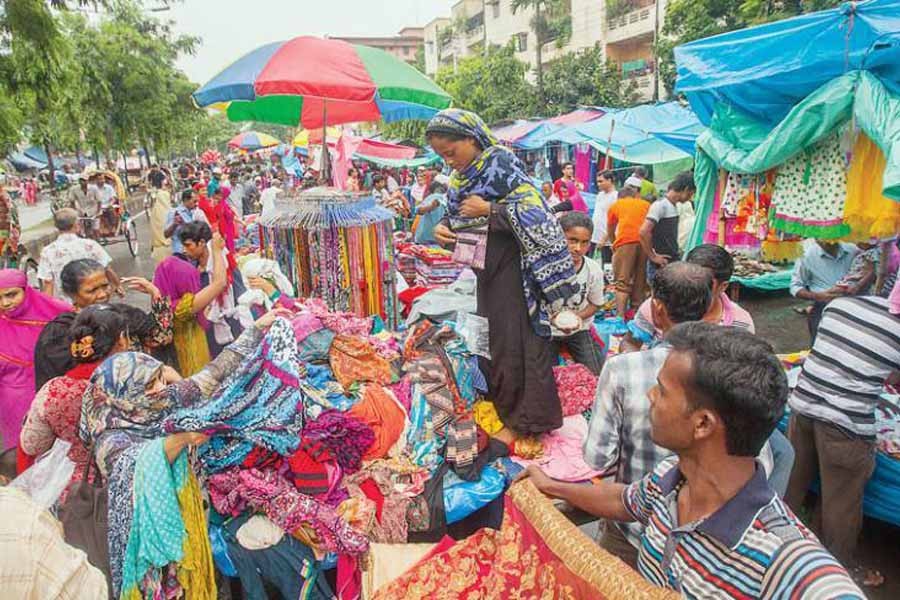Community vendors who sell goods from house to house have radically changed their technique of drawing clients' attention. Many have stopped touting their saleable products and services in a loud voice, or through yelling. The better-off hawkers have lately begun using hand-held megaphones to tell people about their products and services. It's completely a new device. Many, however, find it disturbing. In the distant days, a high noon in a quiet neighbourhood would resonate with their unique styles of hawking products. Many would employ melodious rhymes to the accompaniment of 'Jhunjhuni' to attract teenage girls and women. At this point, many might recall the popular Hindi film song "Nilamwala chhey aana …"
The vocal modulation adopted by vendors to attract residential clients has changed in Dhaka through ages. Paritosh Sen, the celebrated painter and Dhaka expert, has written a whole book --- 'Zindabahar O Onnannyo' to narrate the ingenious ways the city's hawkers in the 1940s used to employ to mesmerise clients. Had Sen been alive today, he would have been appalled hearing the hawkers' voice coming through the metallic loudhailers.
Apart from sound pollution, the commercial use of these megaphones distorts the beauty of the traditional and spontaneous hawking voice of the Dhaka vendors. In spite of great changes in the use, nature and variety of hawkers' items, a number of products have survived through times. Those mainly include household objects, saris and bed sheets, cheap cosmetics, fancy foods like Bakarkhani and Hawai Mithai and, of course, ice-creams. On the eve of two Eids, spices, 'ghee' and chickens enjoy a dominant place among the vendors' merchandise. Another remarkable item comprised old newspapers, which the hawkers used to buy instead of selling. In the recent years, a section of petty traders uses megaphones to collect discarded or out-of-order computer gadgets, TVs, harmoniums etc. They are least aware of the fact that the objects they are dealing in belong to the category of hazardous electronic wastes. There are veritably no authorities who can weigh in and sensitise the ignorant traders to the dangers of E-waste.
Against this mixed backdrop, the pedaled vans roaming the residential areas have come up as a blessing to housewives. These hawkers also have their unique styles of drawing the notice of the customers. These vans sell chiefly 'fresh' vegetables ranging from pumpkins, aubergines, pointed gourds, okras, bitter gourds, lemons to every conceivable veg product. During winter, the otherwise busy ladies are found swarming a van, whenever one enters their area, and engage in a fierce competition to buy the qualitatively better vegetable items. They range from cauliflowers, cabbages, carrots, onion leaves to local and foreign salad leaves. All-season vegetables like tomatoes are sold in huge quantities. Lots of males these days cannot manage time to visit kitchen markets even on their weekly holidays. The mobile van-based market has provided them with a great relief. They can save their valuable time by picking their choice products from the vans. Lots of such vans nowadays sell various types of fishes, too. This has added to the demand for van hawkers.
A striking feature of the mobile vegetable and fish vendors is that they have yet to take recourse to megaphones. Maybe, they consider the unusual but impressive look their slow-moving rickshaw-vans offer is quite enough to attract buyers. Amid this routine scenario, some areas in the capital have suddenly been made off-limits to these vans. It came as kind of a bolt from the blue for both the traders and the clients. There are no explanations. The reason remains shrouded in mystery.


